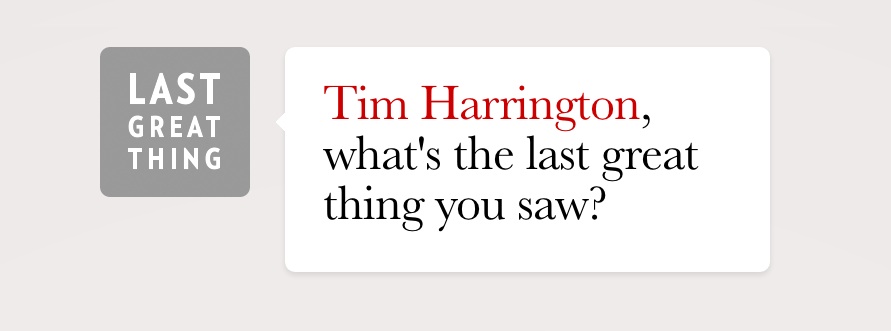
Dividing your attention wisely online is a tough thing to do these days. Between people on Twitter and friends on Facebook posting links to things, and websites and blogs curating stuff from around the Web, it’s easy to feel simultaneously overwhelmed by the never-ending stream of content and also anxious that you might be missing out on something cool that got swept away in the Twitter stream.
Jake Levine and Justin Van Slembrouck, part of the brains behind News.me, want to figure out how people can have the best of both worlds. Levine, general manager, and Van Slembrouck, designer, are part of the team building News.me, a social news reading app that helps users find news that is relevant to them based on their social networks. The promise of News.me is in its name: a customized publication tailored not just to what the reader is like but also adds in a dose of serendipity by including information from the reader’s social circles.
The Web has pretty much failed to produce a new form of publication. Most online news sites are imitations of their offline brethren, magazines and newspapers. Personalized news readers have suffered from a lack of serendipity, the critical part of the magazine and newspaper experience that allows readers to find new things they didn’t know would interest them.
Levine and Van Slembrouck wanted to try something a bit different when it came to news consumption that didn’t have to do with algorithms. What they came up with Last Great Thing, a website and newsletter that for the month of May has featured one great thing on the Web from an interesting, smart person. Contributors have included Clay Shirky, Hilary Mason, Khoi Vinh, Craig Mod and Robin Sloan, to name a few. And the big catch with LGT is that the each contributor’s last great thing only stays up on the site for that one day, and then it is gone. Levine and Van Slembrouck took time to discuss with Digiday their project and the paradoxical challenges that arise when trying to creating a good news-consumption experience.
How and why did you come up with the idea for Last Great Thing?
Jake: We are six people at News.me, and we’ve only been around for eight months or so. We are still in experimentation mode. We’ve got a billion different ideas for things we want to try, and we have a small team of developers who help us do those things that hopefully become interesting things that become part of our product suite.
 Justin: A lot of what we are doing is really technologically driven. It’s based on algorithms to help you find the best news from your Twitter feed and elsewhere. LGT is kind of on the other end of that. It’s human based. It’s more focused. There are other experiences like it out there, like This is My Jam — it’s this thing where you pick one song at a time that is up for one week and people can follow you — and another one is The List Serve. They pick one person at a time who has to send out an email to everyone else. It’s weird in a really good way. You just don’t know who you are going to hear from and what you are going to hear. Another is fish; it’s an app that was made by Robin Sloan who is one of our contributors. It’s an iPhone app. The format is really interesting. So much of what we see online can be forgotten and thrown away.
Justin: A lot of what we are doing is really technologically driven. It’s based on algorithms to help you find the best news from your Twitter feed and elsewhere. LGT is kind of on the other end of that. It’s human based. It’s more focused. There are other experiences like it out there, like This is My Jam — it’s this thing where you pick one song at a time that is up for one week and people can follow you — and another one is The List Serve. They pick one person at a time who has to send out an email to everyone else. It’s weird in a really good way. You just don’t know who you are going to hear from and what you are going to hear. Another is fish; it’s an app that was made by Robin Sloan who is one of our contributors. It’s an iPhone app. The format is really interesting. So much of what we see online can be forgotten and thrown away.
Ad position: web_incontent_pos1
 Jake: Talking to people over the last year about how they get their news, we are consistently having trouble understanding this concept of information overload. People will complain that there is too much stuff. It’s happened since the invention of the printing press, and now we hear it again with Twitter. We hear at once that there isn’t enough stuff in their feed and that there is too much stuff — like they are missing good stuff. There is this weird psychological anxiety around the consumption of information. That’s what we are trying to understand. We are taking this to the extreme with LGT. We are giving you one thing for one day and then it will be gone. It’s one piece of great content that a smart person has chosen.
Jake: Talking to people over the last year about how they get their news, we are consistently having trouble understanding this concept of information overload. People will complain that there is too much stuff. It’s happened since the invention of the printing press, and now we hear it again with Twitter. We hear at once that there isn’t enough stuff in their feed and that there is too much stuff — like they are missing good stuff. There is this weird psychological anxiety around the consumption of information. That’s what we are trying to understand. We are taking this to the extreme with LGT. We are giving you one thing for one day and then it will be gone. It’s one piece of great content that a smart person has chosen.
What’s up with the no archiving of LGT posts?
Jake: We started with the idea of having no archive for the LGT posts. We have them, but we are playing around with fun ways to release all of the LGT posts. It’s kind of like Twitter, how a link can get lost in the feed.
Justin: It’s an extremist thing, but it was a decision to see if we could get people to look at just one thing. We wanted to go against the grain of the common experience on the Web of people clicking a link and then being pulled in and pushed to look at other things on a site and then pushed onto other sites.
Ad position: web_incontent_pos2
Jake: We’ve gotten mixed reviews from our contributors about the lack of archive.
Between all of the websites, blogs, platforms and apps that curate Web content and surface cool stuff, what makes LGT different?
Jake: Part of this is a learning exercise for us. We are not editorial people. We are technologists, but this is very much an editorial problem: how do you deliver people news and make them happy about their news consumption, and in a way that doesn’t have much to do with an algorithm? Part of this is about us putting ourselves in the shoes of editors and finding people to contribute and fit an overall editorial vision. Clay Shirky was our first contributor, and he really grilled us about what we wanted to do with this. He wanted to know who our audience was, what we were looking to get out of it, who the other contributors were. He said, “If you’ve gotten a bunch of white male VCs to contribute, you’ve failed.”
Justin: Clay really helped us steer ourselves into something that is off the beaten path. We wanted to find people who were passionate about something and had something to share.
How are you choosing the people who are featured on LGT? What are the criteria (if there is any) for the the person and the content?
Justin: We started with people we knew, but we wanted to get out of doing that right away because otherwise it would be really boring and routine. Once someone contributed we asked them to pay it forward, to give us a few good recommendations of people we could get in touch with, who they would want to see on LGT.
Jake: At first it was going to be “Last Great Article,” but Clay sent a video, and we were, like, wait, should we allow videos? We decided to open it up to other media. To let people get creative. We’ve gotten videos, a book on Amazon, a play, songs.
Justin: Basically anything that is linkable and accessible without paywalls is OK.
What do you make of all of the commotion about aggregation vs. curation vs. stealing?
Jake: We know that the entire industry is being reinvented. A lot of people are scared that they won’t have a role in the industry in 10 years, but I think most people will. We are all figuring this out. We live in a gray area. Our product is very much in a gray area in terms of legal, in terms of ethical. The publishers we’ve worked with are super-excited about sharing. I don’t know. I’m kind of giving you a lame answer, but it’s a massive question. All of that stuff is good and will have a home in 10 years. The organizing principles of publishing are being challenged.
Justin: We are taking different angles on it too. LGT is purely editorially driven. Then News.me is very technologically driven, but it’s all about showing people the best things online.
Will LGT be up only for this month? Any plans on keeping it going?
Justin: We are going to do a wrap-up post next week. Still TBD on what we are doing with the archive. We would like to see it continue if it makes sense. We want to think about how to make this sustainable as far as time and resources.
Jake: If your readers have any ideas about what we should do about it, please pass them along. We are always open to new ideas. We would love to keep it going, though; it’s a lot of fun.
More in Media

NewFronts Briefing: Samsung, Condé Nast, Roku focus presentations on new ad formats and category-specific inventory
Day two of IAB’s NewFronts featured presentations from Samsung, Condé Nast and Roku, highlighting new partnerships, ad formats and inventory, as well as new AI capabilities.

The Athletic to raise ad prices as it paces to hit 3 million newsletter subscribers
The New York Times’ sports site The Athletic is about to hit 3 million total newsletter subscribers. It plans to raise ad prices as as a result of this nearly 20% year over year increase.

NewFronts Briefing: Google, Vizio and news publishers pitch marketers with new ad offerings and range of content categories
Day one of the 2024 IAB NewFronts featured presentations from Google and Vizio, as well as a spotlight on news publishers.
Ad position: web_bfu